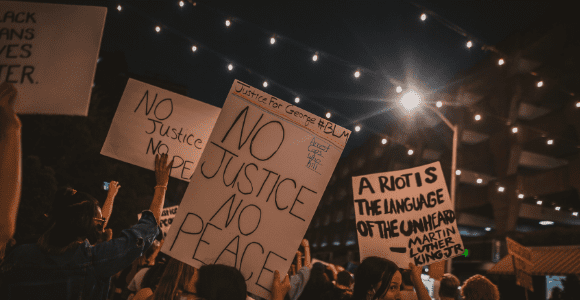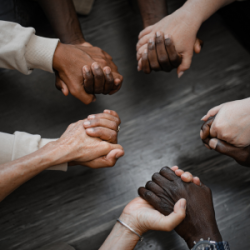Welcome readers! Please subscribe through the buttons on the right.

This week’s reading is another post-Easter appearance story. This one is found in the gospel of Luke:
While they were still talking about this, Jesus himself stood among them and said to them, “Peace be with you.” They were startled and frightened, thinking they saw a ghost. He said to them, “Why are you troubled, and why do doubts rise in your minds? Look at my hands and my feet. It is I myself! Touch me and see; a ghost does not have flesh and bones, as you see I have.” When he had said this, he showed them his hands and feet. And while they still did not believe it because of joy and amazement, he asked them, “Do you have anything here to eat?” They gave him a piece of broiled fish, and he took it and ate it in their presence. He said to them, “This is what I told you while I was still with you: Everything must be fulfilled that is written about me in the Law of Moses, the Prophets and the Psalms.” Then he opened their minds so they could understand the Scriptures. He told them, “This is what is written: The Messiah will suffer and rise from the dead on the third day, and repentance for the forgiveness of sins will be preached in his name to all nations, beginning at Jerusalem. You are witnesses of these things. (Luke 24:36-48)
The gospels’ post resurrection appearance stories follow a familiar pattern that meets the expectations of the communities each version was written for.
Some of the Greeks’ expectations appear in the Works of Plato:
“So that if any one’s body, while living, was large by nature, or food, or both, his corpse when he is dead is also larger; and if corpulent, his corpse is corpulent when he is dead; and so with respect to other things. And if again he took pains to make his hair grow long, his corpse also has long hair. Again, if any one has been well whipped, and while living had scars in his body, the vestiges of blows, either from scourges or other wounds, his dead body also is seen to retain the same marks. And if the limbs of anyone were broken or distorted while he lived, the same defects are distinct when he is dead. in a word, of whatever character any one has made his body to be while living, such will it distinctly be, entirely or for the most part for a certain time after he is dead.” (The Works of Plato: The Apology of Socrates, Crito, Phaedo, Gorgias, Protagoras, Phaedrus, Theaetetus, Euthyphron, and Lysis by George Burges, p. 229)
Plato goes on to say that this permanence in life and after death also applies to a person’s soul.
I don’t think we can make any conclusions about post-mortem realities from the passage in Luke, but these stories were certainly written to meet the expectations of the communities they were written for. They matched their expectations for what the bodies of any person who had died or been killed would be like.
The section of this week’s passage that I believe holds the most promise for our work today is the part that points to the resurrection of Jesus as offering repentance and forgiveness to the society in which Jesus was crucified.
To perceive what connects the resurrection, repentance, and forgiveness we need to understand the social nature of forgiveness. We’ll discuss this next.













